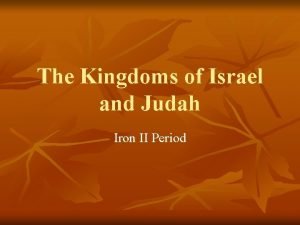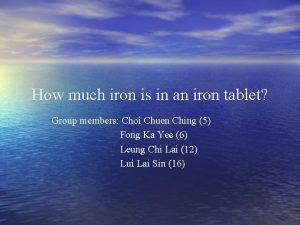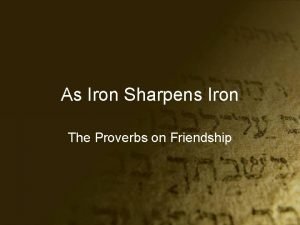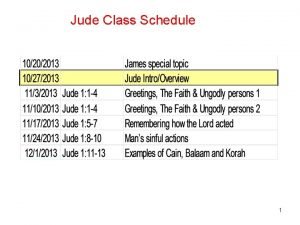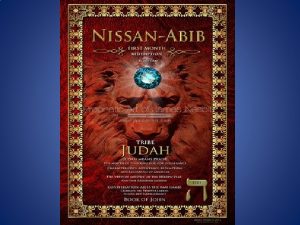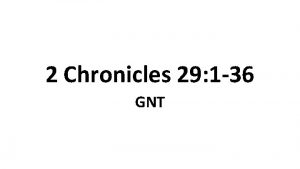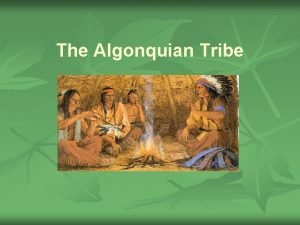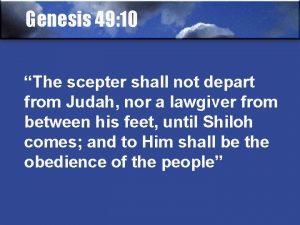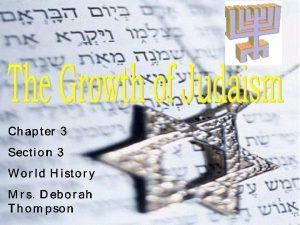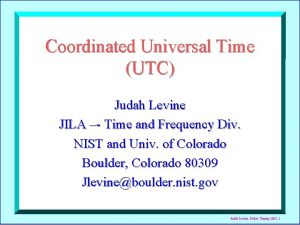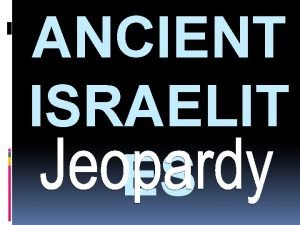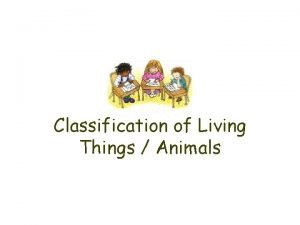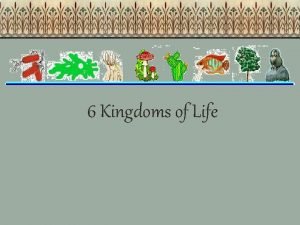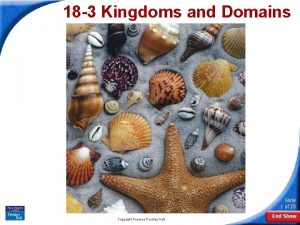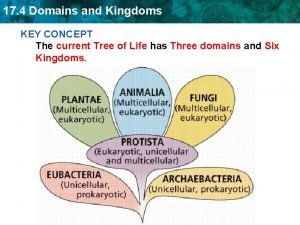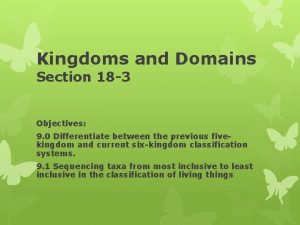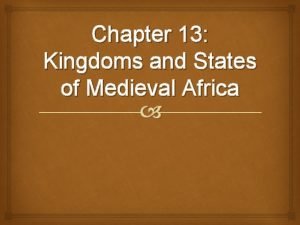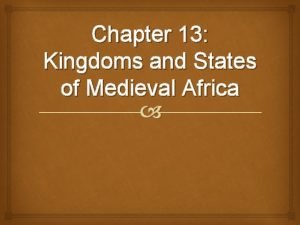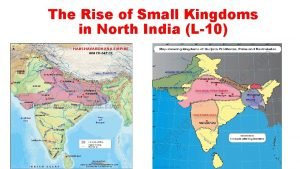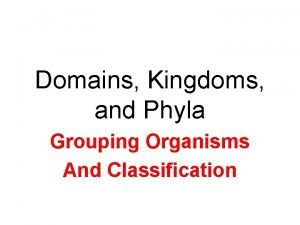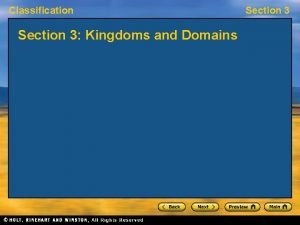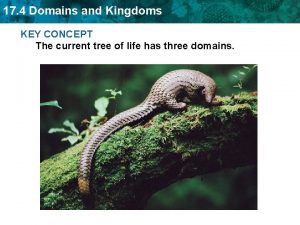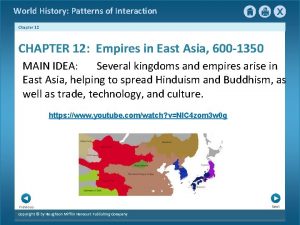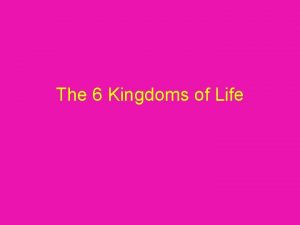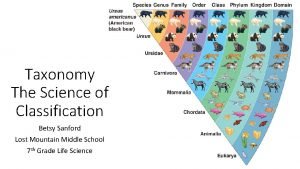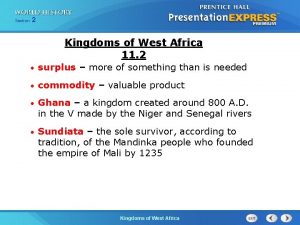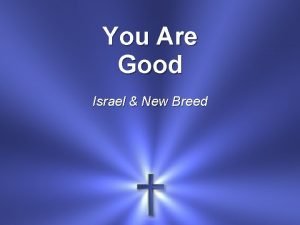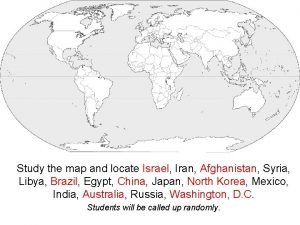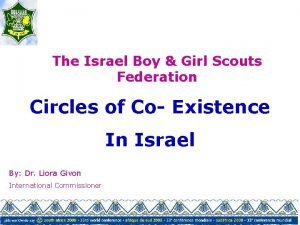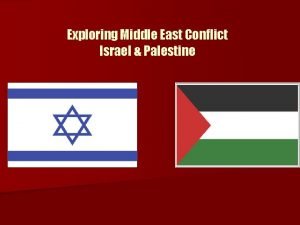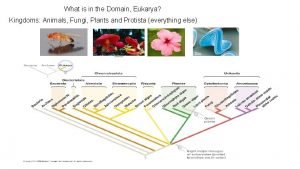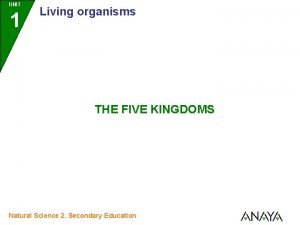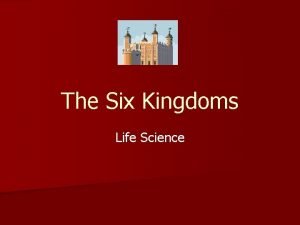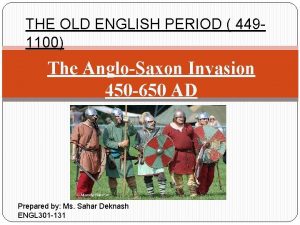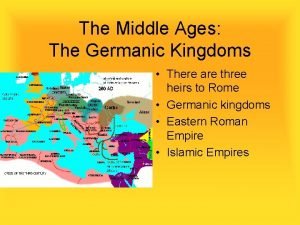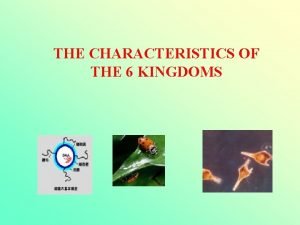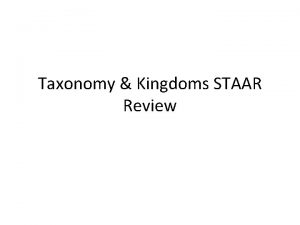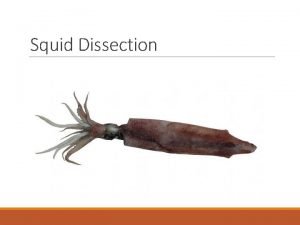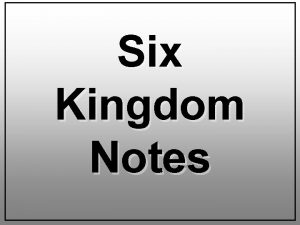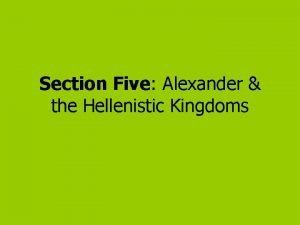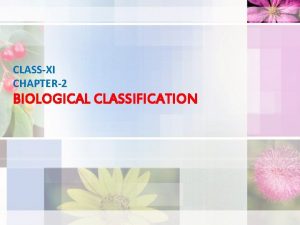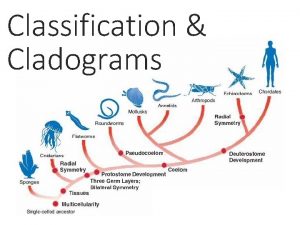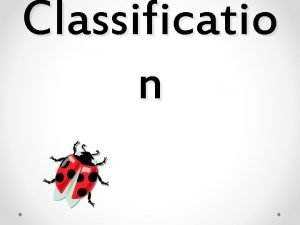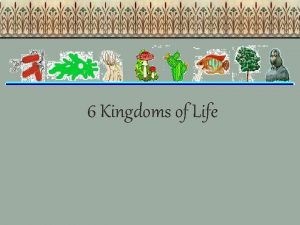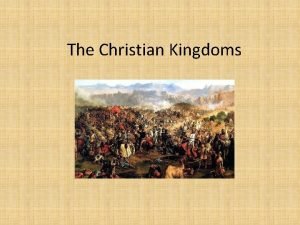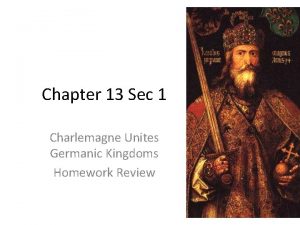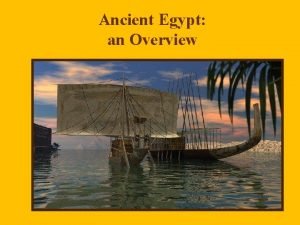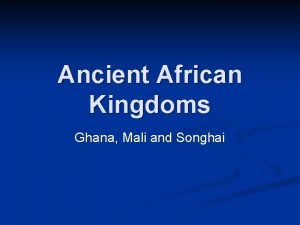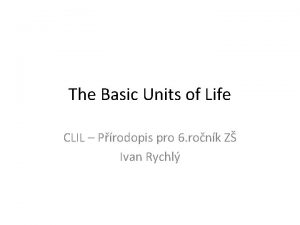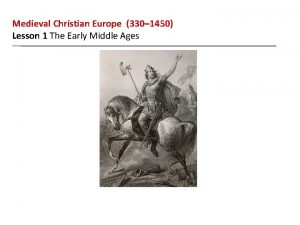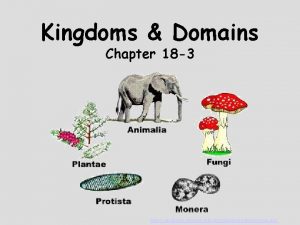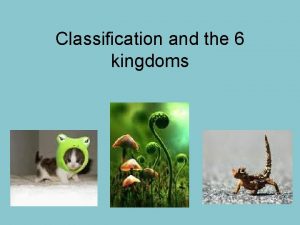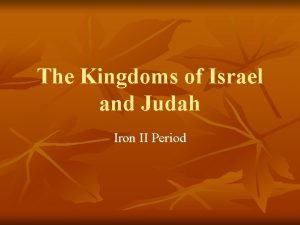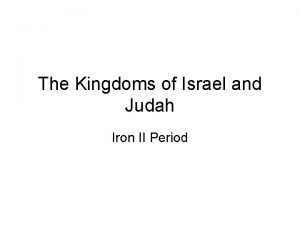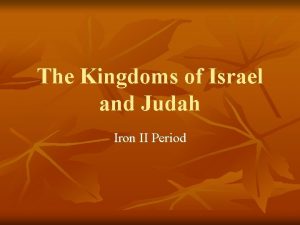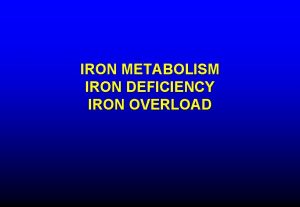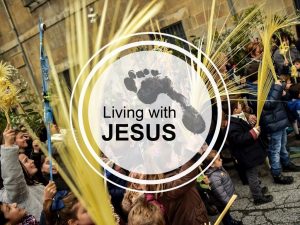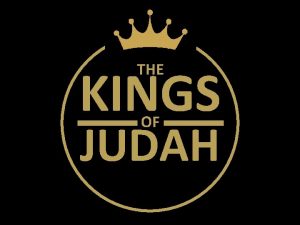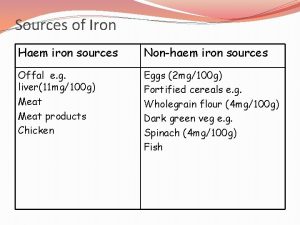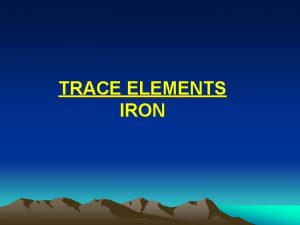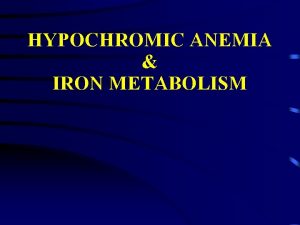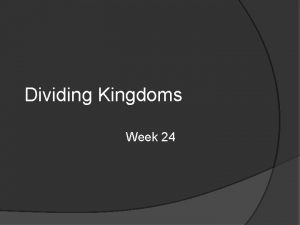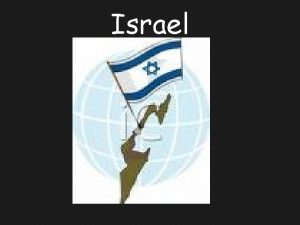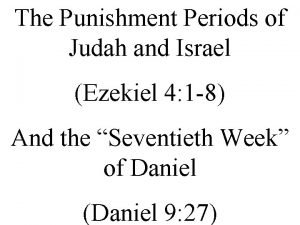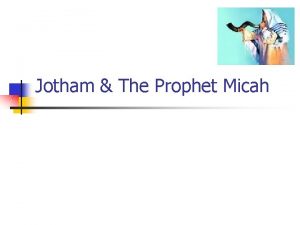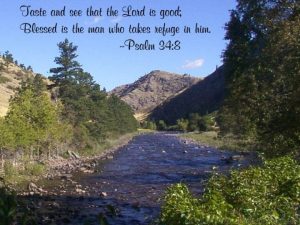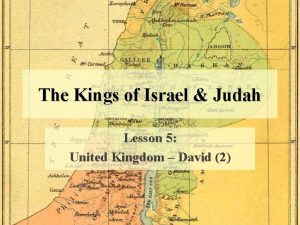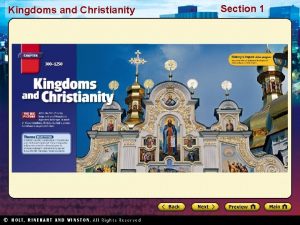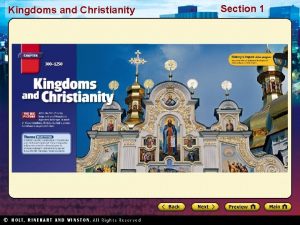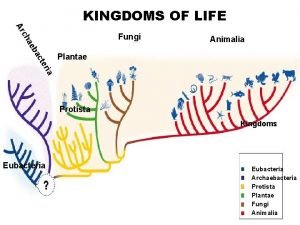The Kingdoms of Israel and Judah Iron II


































![Tel Dan Inscription with phrases “King of I[s-]rael” and “House of David” (9 th Tel Dan Inscription with phrases “King of I[s-]rael” and “House of David” (9 th](https://slidetodoc.com/presentation_image/187d12a744a9965daeb27e3ff4068f70/image-35.jpg)






























































































- Slides: 129

The Kingdoms of Israel and Judah Iron II Period

Traditional/Conventional Chronology: Iron I (1200 -1000 BC): The Period of the Conquest and the Judges; Iron IIA (1000 -925 BC): The Period of the United Monarchy, that is, the time of David and Solomon; Iron IIB (925 -720 BC): The Divided Monarchy: Israel in the north with its capital at Samaria; Judah in the south with its capital at Jerusalem; Iron IIC (720 -586 BC): The Northern Kingdom of Israel is no more; the Southern Kingdom of Judah continues until the Babylonians destroy it in 586 BC. 2

See Textbook, p. 122 Mazar’s “The Modified Conventional Chronology” 3

Biblical Data: 1 Kings 11. 26 -14. 21: -1 Kings 11. 26 -40: The revolt of Jeroboam (against Solomon’s son Rehoboam); - 1 Kings 11. 41 -43: The end of the reign of Solomon; - 1 Kings 12: Political and Religious Schism: Jeroboam king of Israel and the setting up of the two golden calves: at Bethel, just to the N of Jerusalem; and at Dan, in far N. - Now two kingdoms: Judah in the south with its capital at Jerusalem; - Rehoboam, a son of Solomon, is King of Judah (1 Kings 14. 21). 4

1 Kings: - Jeroboam, a former servant of Solomon and from the tribe of Ephraim, is King of Israel (1 Kings 12. 20 [“There was no one who followed the house of David, except the tribe of Judah alone”]). - Israel in the north with its capital at Shechem – Israel separated from the House of David; - under the Omrides, the capital will later be transferred to Penuel, Tirzah, and finally Samaria; - Thus, two kingdoms, Israel in the north and Judah in the south; so we now have the so-called “Divided Kingdom. ” 5

6

Capital Cities of the Northern Kingdom of Israel. 7

Mahanaim (? ) and Peniel in Transjordan. 8

1 Kings: -1 Kings 14. 19 -20: reign of Jeroboam. His death and the “Book of the Annals of the Kings of Israel”; -1 Kings 14. 25: “in the fifth year of King Rehoboam, King Shishak of Egypt came up against Jerusalem…. ”; -1 Kings 14. 30: “There was war between Rehoboam and Jeroboam continually”; - 1 Kings 14. 29: “the rest of the acts of Rehoboam, and all that he did, are they not written in the Book of the Annals of the Kings of Judah? ” - 1 Kings 14. 31 ff: Rehoboam’s death and his successors; 9

10

1 Kings: -1 Kings 16. 23: Omri began to reign over Israel; - 1 Kings 16. 24: Omri and the city of Samaria; - 1 Kings 16. 29: Ahab, son of Omri, began to reign over Israel in Samaria; - 1 Kings 19. 15 -16: Hazael king over Aram; and Jehu will be anointed king over Israel; - 1 Kings 20. 1 -2: King Ben-hadad of Aram …. Marched against Samaria (see also 20. 26); - 1 Kings 22. 39 -40: death of Ahab and his acts written in the “Book of the Annals of the Kings of Israel”, etc. ; 11

12

2 Kings: - 2 Kings: opens during the short reign of Ahaziah king of Israel (mid-9 th century BC); - 2 Kings 1. 1: “After the death of Ahab, Moab rebelled against Israel” (see also 2 Kings 3: Israel, Judah, and Edom go to war against Moab); - 2 Kings 6: wars continue between Israel and Aram; - 2 Kings 10: Jehu king over Israel; - 2 Kings 14. 23 -29: The reign of Jeroboam, that is, Jeroboam II; 13

2 Kings: - 2 Kings 17. 5: the King of Assyria invaded all the land of Samaria, captured Samaria, and carried the Israelites away to Assyria; - 2 Kings 17. 7 -18: possible explanation for the end of the Northern Kingdom; an extended exposition of the Deuteronomistic theology; - 2 Kings 17. 24: king of Assyria brought people and placed them in the cities of Samaria; 14

Samaria: Capital City of the Northern Kingdom of Israel. 15

16

17

18

2 Kings: - 2 Kings 18. 1: King Hezekiah (727/715 -698/687 BC) king of Judah; - 2 Kings 18. 9 -10: King Shalmaneser (705 -681 BC) of Assyria besieged Samaria and took it; - 2 Kings 18. 13: Shalmaneser came up against all the cities of Judah and captured them (during the reign of Hezekiah); - 2 Kings 18. 15: Hezekiah pays tribute to Shalmaneser; as a result, the Assyrians did not take Jerusalem (19. 32 -34); 19

20

21

2 Kings: - 2 Kings 22. 1 -30: Josiah (640 -609 BC): a righteous king; a second Moses or Joshua to match the second David (Hezekiah); - 2 Kings 22. 3 -13: the Book of the Law (some form of Deuteronomy) found during repairs to the Temple; - 2 Kings 23. 1 -3: Josiah’s reform of religion; - 2 Kings 23. 31 -25. 30: The end of Judah. - 2 Kings 24: King Nebuchadnezzar of Babylon came up against Jerusalem, captured and destroyed it. 22

23

1 and 2 Chronicles (we saw this previously): - “Chronicles” – a summary of divine history; - the Chronicler wrote during the Persian period (539 -332 BC); - dependence upon the Books of Samuel is clear in the narration of Saul’s demise and David’s reign (1 Chr 1029); - dependence upon the Books of Kings is unmistakable in the narration of Solomon and the Judahite kingdom (2 Chr 1 -36); - the United Monarchy (1 Chronicles 10 -2 Chronicles 9); - the Chronicler has access to other biblical sources as well as non-biblical ones; - the Chronicler’s problem was how to reconcile all these sources. 24

2 Chronicles 10 -36: -The emergence, continuation, and fall of the kingdom of Judah. - the Chronicler concentrates his attention upon the tribes of Judah, Benjamin, and Levi, who make up the Southern Kingdom of Judah. 25

26

Finkelstein: What was the first Israelite territorial entity? No direct proof in the archaeological record for the existence of an elaborate polity (political organization) in the highlands in the late-Iron I period (the late-11 th century) and the early Iron II period (much of the 10 th century BC); Iron I sites, ca. 90% of them, continued to be inhabited in the Iron II period; Exception for area north of Jerusalem, that is, around Gibeon and Bethel; He attributes this to Pharaoh Sheshonq’s (Shishak) campaign (late-10 th century BC; ca. 945 -924 BC). 27

1 Kings 11. 40; 14. 25; invasion documented in Egyptian sources and in the archaeological record 28

Finkelstein: The rise of an Israelites entity farther north; The Northern Kingdom in the time of the Omrides (early 9 th century BC); Extra-biblical Textual Evidence: Shalmaneser III (859 -824 BC), king of Assyria, mentions “Ahab the Israelite” as one of his opponents in the battle of Qarqar in western Syria in 853 BC; The Mesha Inscription (ca. 850 BC) mentions how the Omrides had conquered territories in Moab (mid-9 th century); Tel Dan Inscription (9 th or 8 th century; excavator dates it to the mid-9 th century) states that Israel took land from Aram; 29

30

Tell Qarqur in the Orontes River Valley in Syria. 31

Tell Qarqur – An ASOR Sponsored Excavation. 32

Stele of Shalmaneser III that reports on Battle of Qarqar (Kurkh Stele) (853 33

The Mesha Inscription/Moabite Stone (ca. 850 BC) 34
![Tel Dan Inscription with phrases King of Israel and House of David 9 th Tel Dan Inscription with phrases “King of I[s-]rael” and “House of David” (9 th](https://slidetodoc.com/presentation_image/187d12a744a9965daeb27e3ff4068f70/image-35.jpg)
Tel Dan Inscription with phrases “King of I[s-]rael” and “House of David” (9 th or 8 th century BC). 35

Black Obelisk of Shalmaneser III, King of Assyria (reigned 858 -824 BC) 36

“Jehu, son of Omri” (845/841 -818/814 BC), on the Black Obelisk 37 of Shalmaneser III

38

Finkelstein: Archaeology: - Building operations on the part of the Omrides: - Megiddo: two or three ashlar palaces; - Samaria, Jezreel, and Hazor: monumental architecture with large-scale filling and leveling operations; -The palace at Samaria is the largest and most elaborate Iron Age structure known in the Levant. 39

Megiddo – artistic reconstruc tion. 40

Palaces: Nos. 1723, 6000, 338. 41

Mason Marks on Ashlar Blocks from Palace 1723 at Megiddo. 42

Hazor – Upper City. 43

Finkelstein: Northern Kingdom: - A territorial state comprised of both highland lowland areas; - the hills of Samaria inhabited by 2 nd millennium sedentary and pastoralist population; - Cultural continuity of Canaanite traits: at Taanach and Megiddo (Textbook, p. 150); - Ethnic and cultural diversity: see in the Omride architecture; - Fortified compounds: at Megiddo and Jezreel; at Hazor on the border with Aram-Damascus; and at Gezer on the border with Philistia. 44

45

46

Finkelstein: Northern Kingdom: - A short period of time; - political circumstances change dramatically; - a break in Assyrian pressure in the west led to the rise of Aram-Damascus; - result: the collapse of the Omride dynasty; - This in turn led to the rise of the first “national state” farther to the south, first and foremost in Judah (Textbook, p. 151). 47

Finkelstein: Judah: - In 10 th and early-9 th century (Textbook, p. 151): - Jerusalem: a relatively poor village; - ruled over a sparsely inhabited southern highland; - In 9 th century: - first signs of statehood in Judah: - in the Shephelah in the west and the Beer-sheba Valley in the south; 48

49

Finkelstein: Judah: - In the Shephelah: Lachish and Beth-shemesh; - Lachish: the “second city” of Judah; - Beth-shemesh: massive fortifications and an elaborate water system; - in the Beer-sheba Valley: Arad and Beer-sheba; - both fortified for the first time in the 9 th century; 50

51

52

Lachish – Aerial View 53

Lachish – Ground Plan. 54

55

Beth-shemesh – Aerial View from the South. 56

Beth-shemesh – Reservoir. 57

58

Finkelstein: Judah: - In Jerusalem: - first signs of significant building activity appear to date to the 9 th century: the “terraces” and the “Stepped Stone Structure”; both built on the eastern slope of the City of David, near the Gihon spring; 59

“Stepped-Stone Structure”: City of David (10 th century th 60

Gihon Spring – Interior 61

Gihon Spring and Hezekiah’s Tunnel 62

Finkelstein: Judah: - In early 9 th century: Judah under the northern Israelite, that is, Omride domination (see 2 Kings and the Tel Dan Inscription); - in first half of the 9 th century: a United Monarchy that stretched from Dan in the north to Beer-sheba in the south; the period of the Omrides; - Change: the fall of the Omride dynasty under the pressure of Aram-Damascus in the 840 s BC (Textbook, p. 152); - Israel’s grip over Judah ceased; - window of opportunity opened for Judah. 63

64

Finkelstein: Judah: - End of 9 th century and the beginning of the 8 th century BC; - In late 8 th century: Jerusalem grew to be the largest city in the entire country: massive fortifications; water from the Siloam pool; elaborate rock-cut tombs; evidence of an affluent elite; - monumental inscriptions: in the Siloam tunnel; on Siloam tombs; seal impressions (bullae); ostraca; lmlk storage jars; - large-scale, state-controlled, olive-oil production in the Shephelah, e. g. at Tel Miqne/Ekron. 65

The Jebusite City that David Allegedly Conquered – Artistic 66

Jerusalem in the 8 th Century BC 67

Gihon Spring and Hezekiah’s Tunnel 68

Finkelstein: Judah: - Reasons for Judah’s development: - the incorporation of Judah in the Assyrian global economy (begun in the 730 s under Tiglath-pileser III); Judah participated in the Assyrian-dominated, Arabian-spice trade; - Sudden growth in population (Jerusalem in particular); - Jerusalem grew from ca. 5 ha to ca. 60 ha; and in population from 1, 000 to 10, 000 inhabitants; - increase in settlements in the hill country south of Jerusalem (Textbook, p. 154); - a doubling of Judah’s population. 69

Finkelstein: Judah: - Growith: due to a flow of refugees from the north following the conquest of Israel by Assyria in 722 BC; - A second wave of refugees in Jerusalem after the destruction of the Shephelah and the Beer-sheba Valley by Sennacherib in 701 BC; - Judah and Jerusalem: a mixed population of Judahite and ex-Israelites; - Archaeologically: a decline in settlements in the area between Shechem and Jerusalem; 70

71

Lachish – Aerial View 72

Lachish – Ground Plan (late 8 th century BC). 73

Lachish – Artistic Reconstruction (late 8 th century BC) 74

Sennacherib’s Siege Ramp at Lachish (701 BC); Sennacher’s reign 704 -681 BC) 75

76

Sennacherib Making an Offering to the God. 77

Finkelstein: Judah: - Hezekiah (715 -687 BC): abolished shrines at Arad, Beersheba, and Lachish at the end of the 8 th century; - setting down the early history of Israel (1 Sam 16 -1 Kings 2): the History of David’s Rise to Power and the Court or Succession History; - written as an apologia: to vindicate David of any wrongdoing and to explain “what really happened”; - the late 8 th century BC: a Deuteronomistic writer or school; 78

Finkelstein: Judah: - Served to reconcile southerners and northerners within Judah; - served for the rise of a pan-Israelite ideology; - the desire to unite “all Israel” within the borders of Judah; - point of departure for three centuries of scribal activity resulting in the biblical history of Israel as we know it (Textbook, p. 157). 79

Mazar (Textbook, pp. 159 ff): - Adheres to a United Monarchy in the 10 th century BC, that is, the traditionalists’ view; - Also to two Israelite kingdoms following the short period of the United Monarchy; - the northern Kingdom of Israel lasted for only around 200 years during which it was ruled by several dynasties; - it was destroyed by the Assyrians in 732 and 722 BC; - Judah lasted more than 300 hundred years and was ruled during this entire time by a single dynasty, the House of David; - it was destroyed by the Babylonians in 586/87 BC. 80

Mazar: - Extensive archaeological research in Israel and Jordan; - on settlement patterns, demography, town planning, etc. ; - information on religious beliefs; - burial customs; - inscriptions, including seals and seal impressions (bullae), ostraca; - many of the finds can be related to biblical texts. 81

Jehoash Inscription. 82

Drawing of Jehoash Inscription. 83

James Ossuary. 84

Inscription and its translation on the James Ossuary. 85

Mazar: - Controversy between the maximalists and the minimalists over the size of Jerusalem; - A debate about the chronology of Judean sites in the 8 th 7 th centuries BC, e. g. , Lachish; 86

Mazar: - Israel and Judah in the 9 th century BC (Textbook, pp. 160 -61); 87

88

Mazar: - The Northern Kingdom of Israel (Textbook, pp. 162 -63); 89

Mazar: - Judah (Textbook, pp. 163 -66); - The Status of Judah during the 8 th and 7 th centuries BC (see Textbook, pp. 166 -69). 90

Mazar: - the destruction of the northern kingdom of Israel and its meaning for Judah; - Hezekiah’s (ca. 715 -687 BC) rebellion against Sennacherib (704 -681 BC); -The Assyrian invasion of 701 BC; - Golden age of Judah under Hezekiah and his son Manasseh; - Judah, a vassal state under Assyria; - prosperity under Josiah (640 -609 BC); destruction of Judah and Jerusalem in 586 BC; 91

The Oriental Institute of Chicago’s Prism of Sennacherib. 92

93

Mazar: The status of Judah during the 8 th and 7 th centuries BC (Textbook, pp. 166 -69); - Development of Judah and Jerusalem; - expansion of Jerusalem towards the Western Hill; - Hezekiah’s building activities on the Western Hill; - refugees settled in Jerusalem after 722 BC; - new towns and farmsteads established in the Judean hills around Jerusalem, in the northern Negev, and in the Judean desert (not before the 7 th century); 94

Expansion of Jerusalem to the West under Hezekiah (715 -687 95

HEZEKIAH’S (BROAD) WALL - JERUSALEM. 96

Mazar: The Status of Judah during the 8 th and 7 th centuries BC (Textbook, pp. 166 -69); - Fortresses and stations along the Negev roads leading to the Red Sea and Edom; - related to the incense trade? - the fortress at Hazevah; - two cult places: at the entrance to Hazevah and at Horvat Qitmit; - the use of camels to cross desert routes; 97

98

The domesticated camel (beginning in the Iron I Age) 99

Mazar: The status of Judah during the 8 th and 7 th centuries BC (Textbook, pp. 166 -69); - Knowledge of writing spread; - The Siloam Inscription; - literary texts and prayers written on plastered walls (at Kuntillet `Ajrud and Tell Deir `Alla – both outside Judah); - blessings incised on silver amulets; - ostraca from Lachish; - seals and seal impressions (bullae); - several papyrus documents from the Judean desert; 100

Siloam Inscription – from the time of Hezeikah (715 -687 BC) 101

Gihon Spring – Interior 102

Gihon Spring and Hezekiah’s Tunnel 103

Siloam Inscription – drawing of letters on the inscription 104

Kuntillet `Ajrud Art and Text. 105

106

Traditional Route of the Exodus between Egypt and the plains of Moab in Jordan. 107

Texts on Plaster from Tell Deir `Alla, Jordan Valley. 108

Deir Alla – on the east side of the Jordan River, to the south of the Sea of Galilee. 109

Gihon Spring and Hezekiah’s Tunnel to the Pool of 110 Siloam.

The Siloam Inscription Enhanced. 111

Mazar: The status of Judah during the 8 th and 7 th centuries BC (Textbook, pp. 166 -69); - Short Term Events: Archaeology of Warfare (Textbook, pp. 169 -74) – these can be detected by archaeological work; - attacks by Hazael, king of Damascus, in the 9 th century, e. g. , Hazor; - response to Assyrian threats in the form of defensive systems, e. g. , Lachish; - sophisticated water systems throughout the country; - huge stable compounds at Megiddo; 112

Water System at Hazor. 113

Interior of the Water System at Hazor. 114

Plan of the Water system at Hazor. 115

Gihon Spring and Hezekiah’s Tunnel to the Pool of 116 Siloam.

Mazar: - Short-term events; and - Long-term processes (in Israel and Judah). - Short term type of evidence related to biblical and extra-biblical history: - royal building operations known from scripture; - military events known from biblical and extra-biblical texts. - Long-term processes, for example, the development of Israelite religion. 117

Mazar: Short Term Events: Archaeology of Warfare (Textbook, pp. 169 -74) – these can be detected by archaeological work; - Assyrian military attacks during the last third of the 8 th century; - Heavy destruction layers at many 8 th century sites; - Sennacherib’s invasion of Judah in 701 BC; - The water projects of Hezekiah in Jerusalem; - Jars stamped with a royal seal – lmlk “belonging to the king”; 118

LMLK Stamped Jar handle. 119

Mazar: Short Term Events: Archaeology of Warfare (Textbook, pp. 169 -74) – these can be detected by archaeological work; - Jerusalem spared from the Assyrian conquest; - Babylonian conquests of Philistia and Judah between 605 and 586 BC; -- afterward: population in Judah detected only in the land of Benjamin, north of Jerusalem. 120

Mazar: Long-Term Processes: The Case of Israelite Religion (Textbook, pp. 174 -79) – this can be detected by archaeological work; Iron Age territorial states and their major gods; Israelite religion passed through several stages of development; -Yahweh and his consort Asherah: -Kuntillet `Ajrud; -Khirbet el-Kom; -Not a pure monothestic religion; -A strong continuity with Canaanite religion; 121

Kuntillet `Ajrud Art and Text. 122

Arad and its Judean Temple: - A broad hall with a niche, in which there were two standing stones (masseboth) with two incense altars at their front; - A sacrificial altar in the courtyard in front of the hall; -Tel Dan: a public, monumental temple (during the 9 th and 8 th centuries BC): -Temple enclosure: a podium built of ashlar stones that probably supported a shrine (containing a “golden calf” ? ); -In a courtyard in front of the temple: -A large sacrificial altar with four horns; -Subsidiary rooms. 123

Arad and its Iron Age Temple 124

125

At Beer-sheba: -A four-horner altar. -The golden calves: -A “Bull Site” – 12 th century in northern Samaria; -Pottery altar (“cult stand”) – 10 th century from Taanach. -Evidence for local cult places of worship near city gates, e. g. , at Tel Dan, Tel Rehov, Megiddo, Samaria, and Lachish. -Hundreds of clay figurines. -Indications that Israelite religion was based on Canaanite myths, beliefs, and cult practices. 126

Four-horned altar from Beer-sheba 127

128

129
 Kingdoms of israel and judah
Kingdoms of israel and judah Prophets timeline chart
Prophets timeline chart Israel divided into two kingdoms
Israel divided into two kingdoms Mass of iron in an iron tablet
Mass of iron in an iron tablet Iron sharpens iron friendship
Iron sharpens iron friendship Judas and judah
Judas and judah Abib month
Abib month Hezekiah king of judah facts
Hezekiah king of judah facts Algonquian clothing
Algonquian clothing Genesis 49 10
Genesis 49 10 You're the lion of judah the lamb that was slain
You're the lion of judah the lamb that was slain Genesis 49: 10
Genesis 49: 10 When the romans conquered judah they renamed it
When the romans conquered judah they renamed it When the romans conquered judah they renamed it
When the romans conquered judah they renamed it Judah levine
Judah levine Judah levine
Judah levine Name given to judah by romans refers to the philistines
Name given to judah by romans refers to the philistines What are the two vocal singing styles in pakistan?
What are the two vocal singing styles in pakistan? Compare and contrast israel saudi arabia and turkey
Compare and contrast israel saudi arabia and turkey Hình ảnh bộ gõ cơ thể búng tay
Hình ảnh bộ gõ cơ thể búng tay Bổ thể
Bổ thể Tỉ lệ cơ thể trẻ em
Tỉ lệ cơ thể trẻ em Chó sói
Chó sói Chụp tư thế worms-breton
Chụp tư thế worms-breton Hát lên người ơi
Hát lên người ơi Các môn thể thao bắt đầu bằng tiếng đua
Các môn thể thao bắt đầu bằng tiếng đua Thế nào là hệ số cao nhất
Thế nào là hệ số cao nhất Các châu lục và đại dương trên thế giới
Các châu lục và đại dương trên thế giới Công thức tính thế năng
Công thức tính thế năng Trời xanh đây là của chúng ta thể thơ
Trời xanh đây là của chúng ta thể thơ Mật thư anh em như thể tay chân
Mật thư anh em như thể tay chân 101012 bằng
101012 bằng Phản ứng thế ankan
Phản ứng thế ankan Các châu lục và đại dương trên thế giới
Các châu lục và đại dương trên thế giới Thơ thất ngôn tứ tuyệt đường luật
Thơ thất ngôn tứ tuyệt đường luật Quá trình desamine hóa có thể tạo ra
Quá trình desamine hóa có thể tạo ra Một số thể thơ truyền thống
Một số thể thơ truyền thống Bàn tay mà dây bẩn
Bàn tay mà dây bẩn Vẽ hình chiếu vuông góc của vật thể sau
Vẽ hình chiếu vuông góc của vật thể sau Biện pháp chống mỏi cơ
Biện pháp chống mỏi cơ đặc điểm cơ thể của người tối cổ
đặc điểm cơ thể của người tối cổ Thế nào là giọng cùng tên?
Thế nào là giọng cùng tên? Vẽ hình chiếu đứng bằng cạnh của vật thể
Vẽ hình chiếu đứng bằng cạnh của vật thể Vẽ hình chiếu vuông góc của vật thể sau
Vẽ hình chiếu vuông góc của vật thể sau Thẻ vin
Thẻ vin đại từ thay thế
đại từ thay thế điện thế nghỉ
điện thế nghỉ Tư thế ngồi viết
Tư thế ngồi viết Diễn thế sinh thái là
Diễn thế sinh thái là Dạng đột biến một nhiễm là
Dạng đột biến một nhiễm là Các số nguyên tố
Các số nguyên tố Tư thế ngồi viết
Tư thế ngồi viết Lời thề hippocrates
Lời thề hippocrates Thiếu nhi thế giới liên hoan
Thiếu nhi thế giới liên hoan ưu thế lai là gì
ưu thế lai là gì Sự nuôi và dạy con của hổ
Sự nuôi và dạy con của hổ Khi nào hổ con có thể sống độc lập
Khi nào hổ con có thể sống độc lập Sơ đồ cơ thể người
Sơ đồ cơ thể người Từ ngữ thể hiện lòng nhân hậu
Từ ngữ thể hiện lòng nhân hậu Thế nào là mạng điện lắp đặt kiểu nổi
Thế nào là mạng điện lắp đặt kiểu nổi Protistia
Protistia Domain bacteria characteristics
Domain bacteria characteristics Chapter 17 section 3 domains and kingdoms answer key
Chapter 17 section 3 domains and kingdoms answer key 3 domain 6 kingdom
3 domain 6 kingdom Kingdoms and states of medieval africa
Kingdoms and states of medieval africa Organizing lifes diversity
Organizing lifes diversity Examples of the 6 kingdoms
Examples of the 6 kingdoms Section 18-3 kingdoms and domains
Section 18-3 kingdoms and domains Kingdom protista concept map
Kingdom protista concept map Section 18-3 kingdoms and domains
Section 18-3 kingdoms and domains Medieval africa geography
Medieval africa geography Flow chart of domains and kingdoms
Flow chart of domains and kingdoms Chapter 13 kingdoms and states of medieval africa
Chapter 13 kingdoms and states of medieval africa How are organisms classified into domains and kingdoms
How are organisms classified into domains and kingdoms Small kingdoms in north india are called
Small kingdoms in north india are called Sixkingdoms
Sixkingdoms Keys and kingdoms
Keys and kingdoms Archaea kingdoms
Archaea kingdoms What are the three domains and six kingdoms?
What are the three domains and six kingdoms? Domains and kingdoms
Domains and kingdoms Chapter 12 section 5 kingdoms of southeast asia and korea
Chapter 12 section 5 kingdoms of southeast asia and korea Kingdom dichotomous key
Kingdom dichotomous key 6 kingdoms of life and examples
6 kingdoms of life and examples Family order genus species
Family order genus species How did the kingdoms of west africa develop and prosper
How did the kingdoms of west africa develop and prosper 18-3 kingdoms and domains
18-3 kingdoms and domains You are good israel
You are good israel A christmas carol: scrooge and marley by israel horovitz
A christmas carol: scrooge and marley by israel horovitz Afghanistan and israel map
Afghanistan and israel map Israel boy and girl scouts federation
Israel boy and girl scouts federation Is palestine in israel
Is palestine in israel Israel palestine borders
Israel palestine borders Middle east war
Middle east war Kingdoms of the eukarya domain
Kingdoms of the eukarya domain Powerful african kingdoms
Powerful african kingdoms Five kingdoms science
Five kingdoms science Are archaebacteria autotrophs
Are archaebacteria autotrophs 4491100
4491100 Germanic kingdoms in the middle ages
Germanic kingdoms in the middle ages Spanish kingdoms map
Spanish kingdoms map Characteristic of
Characteristic of Kingdom chart
Kingdom chart Squid ovary
Squid ovary Six kingdom characteristics chart
Six kingdom characteristics chart The hellenistic kingdoms
The hellenistic kingdoms Why are protists the junk drawer
Why are protists the junk drawer Sussex and wessex
Sussex and wessex Cladogram of the 6 kingdoms
Cladogram of the 6 kingdoms Kingdom animalia cladogram
Kingdom animalia cladogram The organism quercus phellos is a member of the genus
The organism quercus phellos is a member of the genus Five kingdoms of life
Five kingdoms of life Dr bridget ryan
Dr bridget ryan Six kingdoms worksheet
Six kingdoms worksheet Kingdoms of archaea
Kingdoms of archaea Kingdoms cladogram
Kingdoms cladogram Classificatio
Classificatio 7 kingdoms of england
7 kingdoms of england How old is english language
How old is english language Bacteria is found in which of the 6 kingdoms
Bacteria is found in which of the 6 kingdoms Is yeast multicellular or unicellular
Is yeast multicellular or unicellular The christian kingdoms
The christian kingdoms The 6 kingdoms
The 6 kingdoms Charlemagne unites germanic kingdoms
Charlemagne unites germanic kingdoms Egypt 3 kingdoms
Egypt 3 kingdoms West african kingdoms in order
West african kingdoms in order Five kingdoms of living things
Five kingdoms of living things Medieval kingdoms in europe lesson 1
Medieval kingdoms in europe lesson 1 Cell kingdoms
Cell kingdoms Animals in the same phylum
Animals in the same phylum
